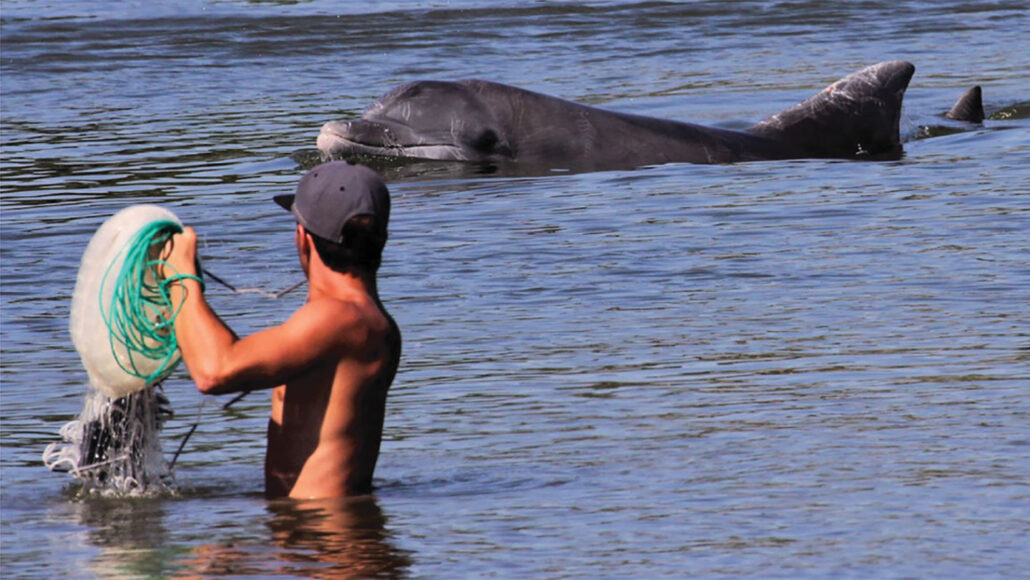Questions for “People and animals sometimes team up to hunt for food”

Fishers (one shown) in the Brazilian city of Laguna work with dolphins to catch elusive mullet.
M. Cantor et al/PNAS 2023
To accompany feature “People and animals sometimes team up to hunt for food”
SCIENCE
Before Reading:
1. Think of an interaction you may have had with a wild animal (hopefully from a safe distance) or that you’ve read about or seen in a book, video or other media. Describe the interaction. How did you (or the person in the interaction, if it wasn’t you) respond to the interaction — and why? How did the animal respond?
2. Humans have developed working partnerships with several domesticated species. Examples include herding dogs, pigs trained to sniff out truffles and horses that pull plows or carriages. Do you think these partnerships developed before, after or at the same time as domestication? Explain your answer.
During Reading:
1. What term describes cooperative relationships between species?
2. In the partnership between Brazilian fishers and bottlenose dolphins, what do the fishers gain? What do the dolphins gain?
3. In the 1800s, what prey did orcas and Australian hunters target together? Which part of the prey did the orcas get? Which part did the human hunters get?
4. What event ended this partnership between people and orcas?
5. How did the honeyguide get its name?
6. When working in partnership with people, what role do the honeyguides play? What role do the human hunters play?
7. What is an example from the story of how the relationship with honeyguides is incorporated into local African cultures?
8. Which group of people in North America cooperated with gray wolves?
9. How are hints of past relationships with wolves still maintained today?
After Reading:
1. Communication is an important part of working together. In the partnerships described in the story, how did the people and animals communicate with each other? Do you think different species can ever fully understand each other? Why or why not? Finally, how does communication between members of different species differ from communication between members of the same species?
2. In the story, Pat Shipman describes engaging with animals as a defining trait of being human. Do you agree with this statement? Why or why not? Give at least one example to support your answer.